Discover 8 hidden attractions, cool sights, and unusual things to do in Tetbury (United Kingdom). Don't miss out on these must-see attractions: Westonbirt Arboretum, Church of St Mary the Virgin, and Highgrove House. Also, be sure to include Rodmarton Manor in your itinerary.
Below, you can find the list of the most amazing places you should visit in Tetbury (England).
Table of Contents
Westonbirt Arboretum
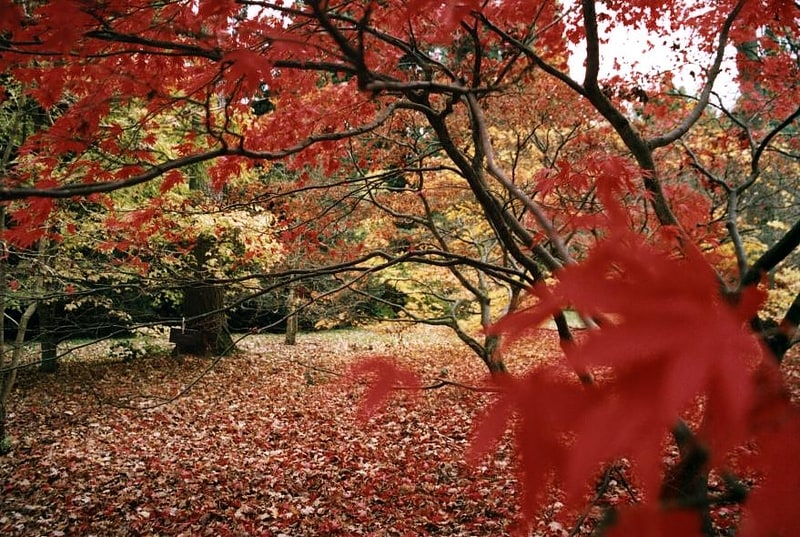
Arboretum in Westonbirt, England. Westonbirt, The National Arboretum is an arboretum in Gloucestershire, England, about 3 miles southwest of the town of Tetbury. Managed by Forestry England, it is perhaps the most important and widely known arboretum in the United Kingdom.
Planted in the heyday of Victorian plant hunting in the mid-19th century as part of the Westonbirt House estate, the arboretum forms part of a site which is listed Grade I on the Register of Historic Parks and Gardens of special historic interest.[1]
Church of St Mary the Virgin
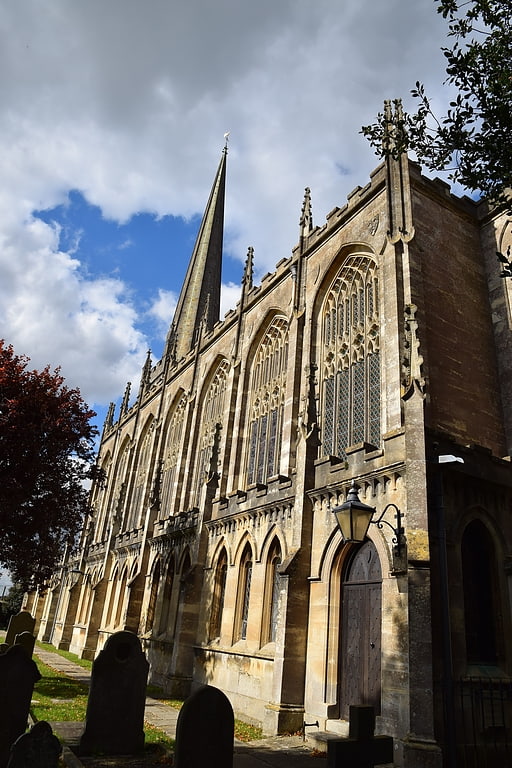
Church in Tetbury, England. The Church of St Mary the Virgin is the parish church of Tetbury in the Cotswold District of Gloucestershire, England. It was built in 1781 incorporating elements of an earlier church. It is a grade I listed building.[2]
Address: Church St, GL8 8JG Tetbury
Highgrove House

Highgrove House is the family residence of the Prince of Wales and the Duchess of Cornwall. It lies southwest of Tetbury in Gloucestershire, England. Built in the late 18th century, Highgrove and its estate were owned by various families until it was purchased in 1980 by the Duchy of Cornwall from Maurice Macmillan. The Prince of Wales remodelled the Georgian house with neo-classical additions in 1987. The duchy manages the estate and the nearby Duchy Home Farm.
The gardens at Highgrove have been open to the public since 1996. The gardens of the late 18th century home were overgrown and untended when Charles first moved in but have since flourished and now include rare trees, flowers and heirloom seeds. Current organic gardening techniques have allowed the gardens to serve also as a sustainable habitat for birds and wildlife. The gardens were designed by Charles in consultation with highly regarded gardeners like Rosemary Verey and noted naturalist Miriam Rothschild.
The gardens receive more than 30,000 visitors a year. The house and gardens are run according to the Prince of Wales's environmental principles and have been the subject of several books and television programmes. The Prince of Wales frequently hosts charitable events at the house.[3]
Address: Highgrove Estate, GL8 0AY Tetbury
Rodmarton Manor

Building in Rodmarton, England. Rodmarton Manor is a large country house, in Rodmarton, near Cirencester, Gloucestershire, built for the Biddulph family. It is a Grade I listed building. It was constructed in the early 20th century in an Arts and Crafts style, to a design by Ernest Barnsley. After Ernest's death in 1925, it was completed by Sidney Barnsley, his brother, and then by Norman Jewson, Ernest's son-in-law. All the construction materials were obtained locally, and hand worked by local craftsmen.
The three wings of the house are angled around a central, circular, lawned courtyard. The east wing, originally for servants, has been converted into flats, whilst the central "public" wing was not lived in by the family, instead being used for community teaching and events. Crafts were taught in the building and the vast majority of the furniture was commissioned for the house and built locally. The southern gardens used hedges to create specific spaces, giving the impression of exterior "rooms" next to the house, with an extensive kitchen garden which provided much of the food for the house. The house was described by the designer Charles Ashbee as the single best example of the Arts and Crafts movement.
During World War II, the house was used as an evacuation point for a London Catholic school, and a maternity house due to the shortage of midwives.[4]
Chavenage House
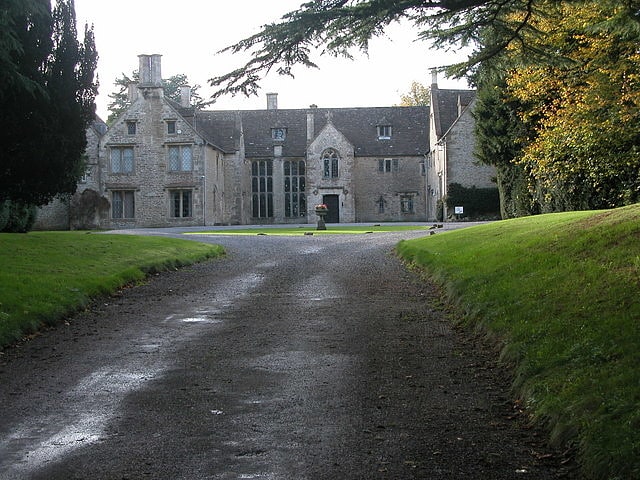
Building in England. Chavenage House, Beverston, Gloucestershire is a country house dating from the late 16th century. The house was built in 1576 and is constructed of Cotswold stone, with a Cotswold stone tiled roof. David Verey and Alan Brooks, in their Gloucestershire Pevsner, describe the house as "the ideal sixteenth-century Cotswold stone manor house". Chavenage is a Grade I listed building.[5]
Address: Chavenage House, Tetbury
Beverston Castle
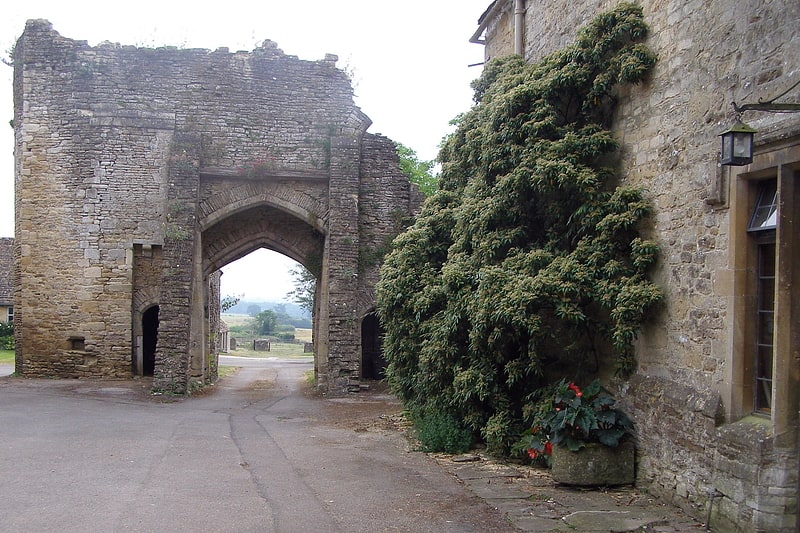
Beverston Castle, also known as Beverstone Castle or Tetbury Castle, was constructed as a medieval stone fortress in the village of Beverston, Gloucestershire, England. The property is a mix of manor house, various small buildings, extensive gardens and the medieval ruins of the fortified building. The castle was founded in 1229 by Maurice de Gaunt.
Much of the castle remained in a state of ruin according to a 2019 report, and had been uninhabitable since the 17th century. Several buildings on the 693-acre property, including five cottages and the 17th century house with seven bedrooms, were in use as residences, however.[6]
St Saviour's Church
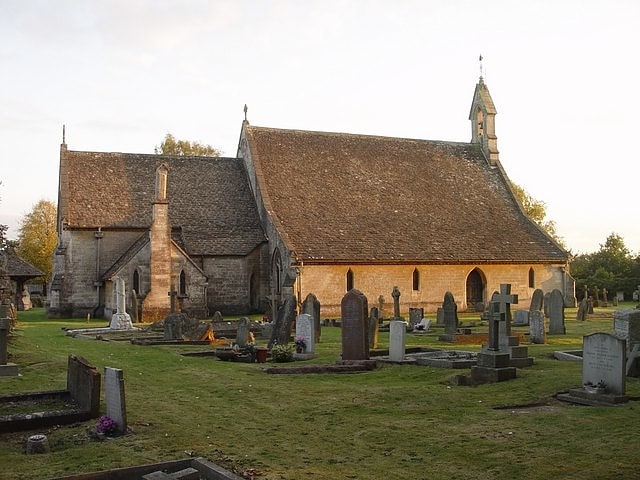
Building in the United Kingdom. St Saviour's Church is a historic 19th-century Anglican church in the town of Tetbury, Gloucestershire, England under the care of The Churches Conservation Trust. It was designed by the architect Samuel Daukes. Augustus Welby Northmore Pugin and John Hardman undertook the design and execution of the chancel roof. St Saviour's is recorded in the National Heritage List for England as a designated Grade II* listed building.[7]
Tetbury Woolsack Races
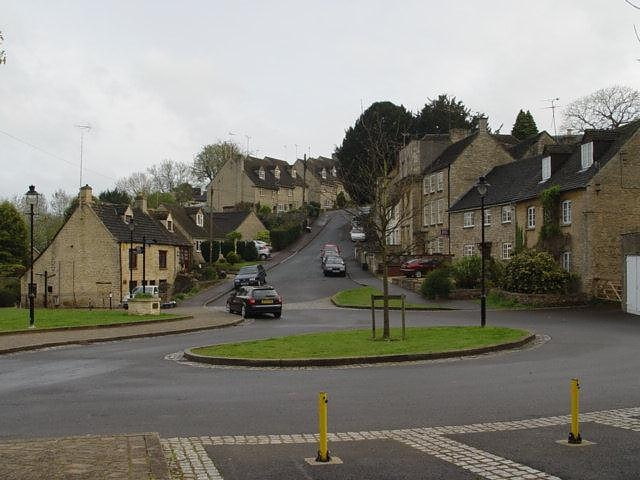
The Tetbury Woolsack Races are an annual sporting event in the English town of Tetbury, in Gloucestershire, where competitors must race up and down the steepest street in the town carrying a full woolsack on their back. It is held each year on the Whitsun Bank Holiday Monday.
The races take place on Gumstool Hill between two public houses, the Royal Oak (the bottom of the hill) and the Crown (at the top). People can take part either as individuals or as part of a team. The individuals race up the hill, the teams (with four members swapping places at each end of the course) race up and down the hill twice.
The men race with a 60-pound (27 kg) woolsack, women have 30 pounds (14 kg). There are also youth races where boys ages 16–18 races with a 30 lb sack, and a children's class. The weight of the children's woolsack is unspecified but is likely about the same as a pillow.
Regular competitors include local rugby teams, the British Army and the Norfolk Mountain Rescue Team.[8]